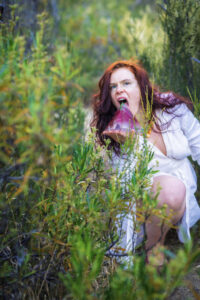
Symbols of Lughnasadh for Altar Making :
Colors : gold, yellow, orange, and green.
Symbols : first harvest – sheaf of wheat, other grains, sunflowers, early apples
Animal Representations :
The Bull and Calf :
The bull is a powerful symbol of strength, virility, and the land’s abundance. Historically, a bull was sometimes sacrificed as part of the festival. Calves, often weaned around this time, represent new life and the continuation of the herd’s wealth.
The Rooster :
As a solar creature, the rooster’s crow at dawn symbolizes the light of the sun god Lugh, essential for the growth of crops.
The Horse :
Horses were celebrated at Lammas, and their inclusion honors deities like Epona, the Goddess of Horses.
Bees :
Representing the late summer honey harvest, bees symbolize the rewards of hard work, community, and cooperation.